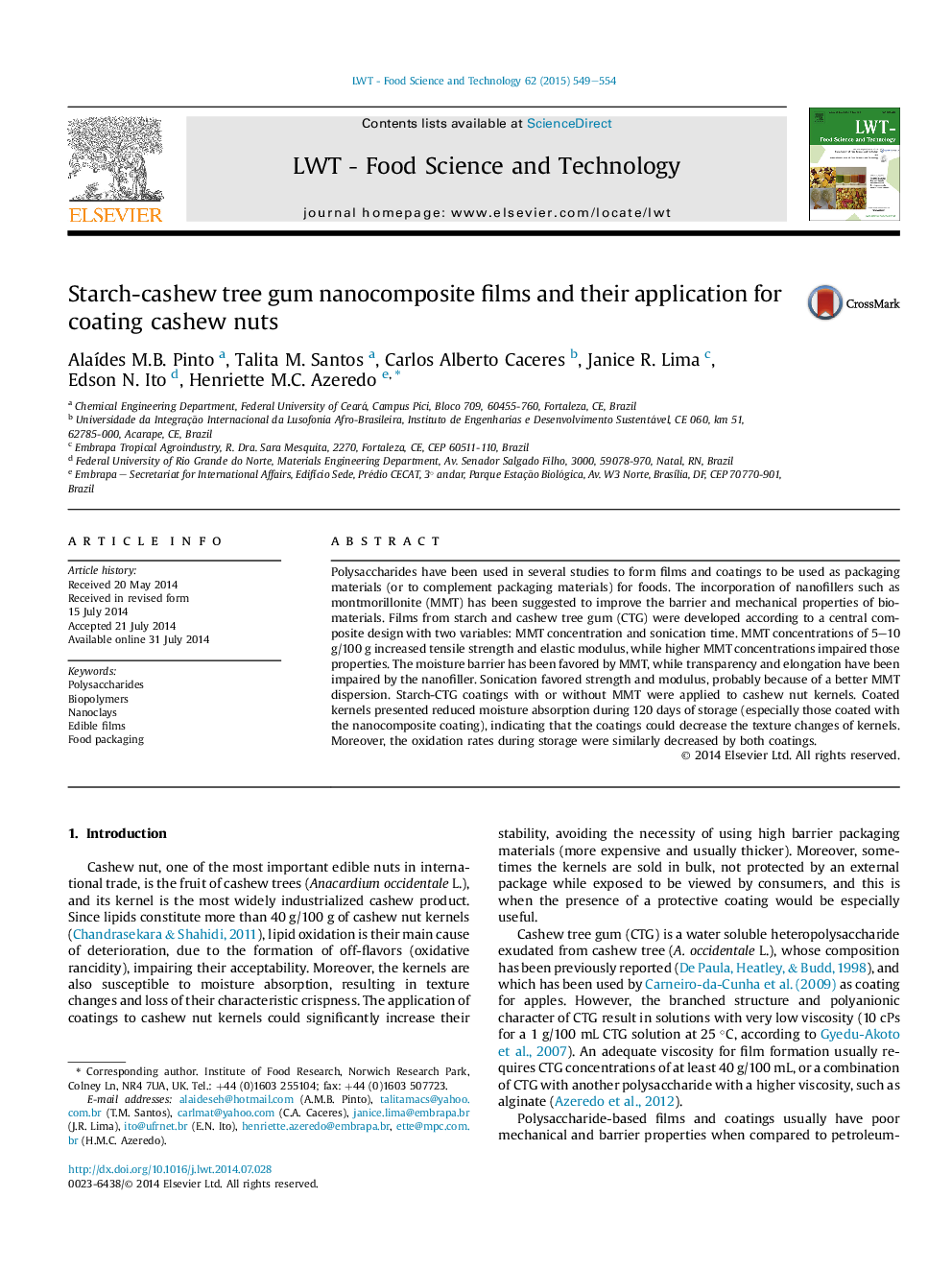| Article ID | Journal | Published Year | Pages | File Type |
|---|---|---|---|---|
| 6402239 | LWT - Food Science and Technology | 2015 | 6 Pages |
â¢Starch-cashew tree gum (CTG) films were developed.â¢Sonication and montmorillonite (MMT) improved tensile properties of the films.â¢MMT improved moisture barrier of films, but reduced their transparency.â¢Coated kernels presented better oxidative stability than non-coated kernels.â¢MMT increased the protection of the coating against moisture loss by kernels.
Polysaccharides have been used in several studies to form films and coatings to be used as packaging materials (or to complement packaging materials) for foods. The incorporation of nanofillers such as montmorillonite (MMT) has been suggested to improve the barrier and mechanical properties of biomaterials. Films from starch and cashew tree gum (CTG) were developed according to a central composite design with two variables: MMT concentration and sonication time. MMT concentrations of 5-10 g/100Â g increased tensile strength and elastic modulus, while higher MMT concentrations impaired those properties. The moisture barrier has been favored by MMT, while transparency and elongation have been impaired by the nanofiller. Sonication favored strength and modulus, probably because of a better MMT dispersion. Starch-CTG coatings with or without MMT were applied to cashew nut kernels. Coated kernels presented reduced moisture absorption during 120 days of storage (especially those coated with the nanocomposite coating), indicating that the coatings could decrease the texture changes of kernels. Moreover, the oxidation rates during storage were similarly decreased by both coatings.
